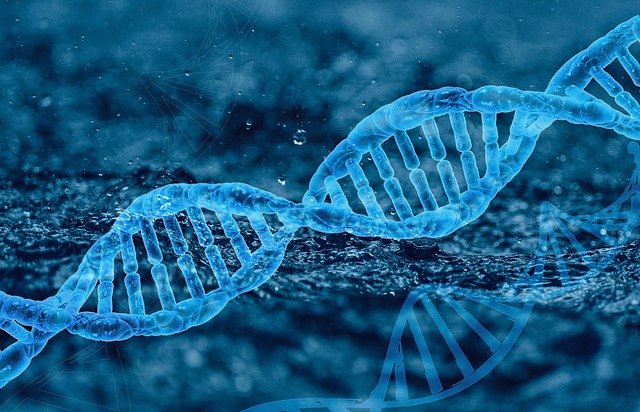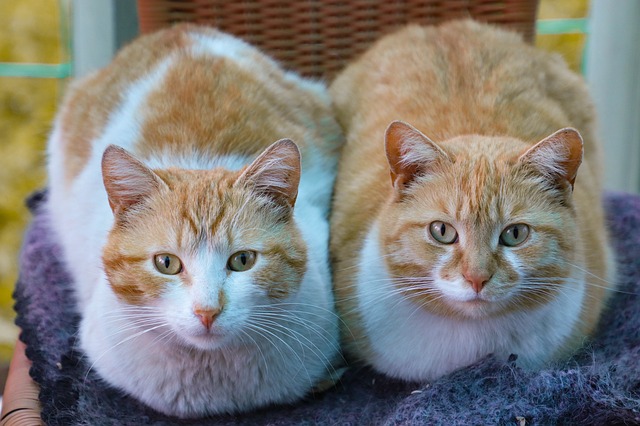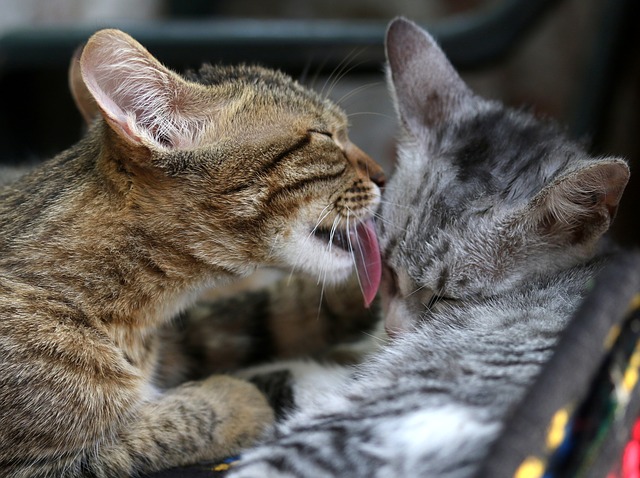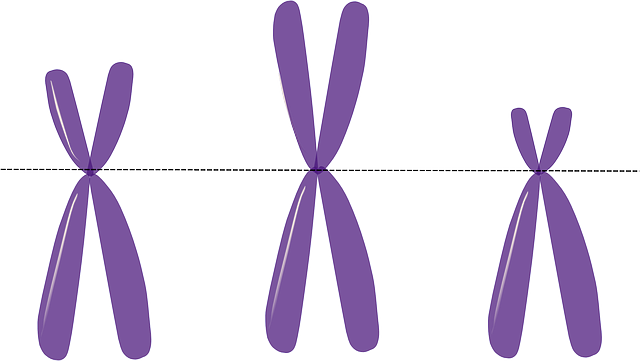Genetics is a hot topic these days, with even the average person getting hooked to DNA crime stories in the movies.
So as a cat lover, you must be curious about the genetic secrets that could explain your cat’s adorable features.
For example, how many chromosomes do cats have and what do they have to do with a cat’s legendary cuteness?
We humans come in with 23 chromosome pairs (46 in total) while the Adder’s Tongue plant (a fern) boasts a stunning 1,000 chromosome pairs (2,000 in total).
This should leave you wondering: where do our beloved feline friends fall?
First things First…What Are Chromosomes?

Chromosomes aren’t exactly a household name but chances are that you have already heard of DNA.
That’s the short form for Deoxyribonucleic Acid, which should make you go: “Oh dear, let’s just go with the short form.”
Actually, DNA and chromosomes have a lot to do with each other. They are responsible for heredity or the collection of traits that get passed down from parents to offspring.
Chromosomes are tiny thread-like structures that are densely packaged inside the nucleus of our cells.
They are made of DNA and protein. Chromosomes carry information that acts like the recipe for creating and running the cell.
It is the chromosomes and the DNA they hold that ensure that a cat doesn’t become a dog, a cabbage, or a human being. They are also what give a pet a unique feature as an individual.
Number of Chromosomes in Living Organisms
Each living thing or species has a characteristic chromosome number. So, this can help you identify a species such as a cat, right? Yes, but don’t always bet on it!
For example, which organism has 48 chromosomes? Surprisingly, the answer is either a chimp or potato since both have the same chromosome count!
This should make you suspect that it takes more than just the chromosome number to make an organism.
It is the genes and how their contents are arranged or sequenced on the chromosomes that hold the key. So, what are genes?
How Genes Fit together with Chromosomes
Genes are where the real action takes place when it comes to heredity. Genes are simply sections that lie along the length of the chromosome or DNA.
Each gene codes for a particular protein. So, every single hereditary trait that a cat has is due to a specific protein. This can be its eye color, its temperament, the size of its muscles, or its ability to taste.
Genes can even code for diseases which happens when the protein they produce is faulty. Some good examples are sickle cell anemia or diabetes.
Bad proteins are usually caused by mutations in the genes. A mutation in a gene in the cat’s taste buds makes them unable to taste sweetness. So, they don’t care for sugary foods or fruits like we do!
In total, cats carry roughly 20,000 genes. This is almost similar to the human number of genes which fall somewhere between 20,000 and 25,000.
Cats are Diploids

Cats, like most mammals, belong to a group called diploid organisms. This simply means that they inherit paired chromosomes, with half of the set coming from each parent.
Therefore, cats get 19 chromosomes from the father and 19 chromosomes from the mother.
Humans have 23 paired chromosomes in which chromosome 1 has 2 copies, chromosome 2 also has 2 copies, and so on until you reach chromosome 22.
For the 23rd chromosome which is the sex chromosome, females have 2 copies of chromosomes X and males have an X and Y chromosome.
Diploids differ from polyploid organisms which have more than two sets of chromosomes. For example, two different rat rodents—the plains viscacha rat and golden viscacha rat—have four chromosome sets.
Polyploids are quite common among plants and are also found among some fishes, frogs, salamanders, and leeches.
Chromosome Production
To produce new chromosomes, you always have to start with another chromosome that already existed.
By a process of duplication, new chromosomes are produced from the old chromosome. This happens when a cell divides to produce 2 new cells.
The process is called mitosis which is how the non-sexual cells of our bodies multiply.
Two brand new cells with identical chromosome numbers are formed out of the old cells.
So, if you started with one cell having 46 chromosomes (23 pairs), by mitosis you end up with two new cells each with 46 chromosomes.
A second different process called meiosis occurs in the reproduction of sex cells.
So, How Many Chromosomes Do Cats Have?

Most cats have 38 chromosomes. But interestingly, not all cats have this number.
For example, the ocelot species, a South American wildcat, has just 36 chromosomes.
If you breed this cat with other cats having the normal 38 chromosomes, you will wind up with cat offspring with 37 chromosomes.
Only the females in this offspring can go on to reproduce but the males will be sterile.
With 38 chromosomes, the cat shares the same number of chromosomes with creatures that are not cats at all such as:
- The Coatimundi: An affectionate and clever raccoon that lives in South America which can be kept as a pet.
- Beech Marten: A weasel-like creature that is found in Asia and Europe and can also be kept as a pet.
- Baja California Rat Snake: A slender snake with large eyes.
When ‘Chromosome Number’ Goes Wrong
If all goes well regarding chromosome production, expect to get a normal healthy cat.
However, anomalies can happen and feline experts have found about 250 diseases that can pass down to cat offspring. Many of these look just like human genetic diseases.
Not all anomalies are troublesome though. In fact, some lead to what seems like enhancement in feline beauty which makes them more appealing to cat owners.
Calico Cat and Tortoiseshell Cats

Calico cats aren’t a particular breed. They are just cats with specific uniquely colored and patterned coats. So, they can be any cat breed such as a Manx, Main Coon, Siberian, etc.
Calico cats are admired for their coat colors. They typically feature 3 different coat colors: black, orange, and white.
This feature comes about due to inactivated chromosomes. It’s a process in female cats where one of its X-chromosomes is silenced or suppressed, effectively reducing the number of active chromosomes to 37.
Calico cats are almost exclusively female with rare exceptions of males.
Tortoiseshell cats are often confused with calico cats. They differ from calico cats in that they lack the white color.
Klinefelter Syndrome in Male Cats
In rare cases, you can also have male calico cats. This is a condition called Klinefelter syndrome. This is similar to Klinefelter syndrome found in men which can make them sterile.
One of the genes that give a cat its fur color of orange and black is located in the X-chromosome.
Remember that females have two X-chromosomes but males have an X and a Y chromosome.
Since they have two X-chromosomes, females can inherit both orange and black colors together.
However, male cats can get only one of these colors—either orange or black—since they possess just one X chromosome.
Klinefelter syndrome is an unusual situation where male cats can end up having an extra X- chromosome so that they have both orange and black colors like the female calico cats.
This gives the cats an XXY- chromosome resulting in an extra chromosome.
Conclusion
By loyally spending so much time by your side, your cat may pass herself off as a human.
Fortunately, it’s the differences in your chromosomes numbers and their genes that will help tell you apart.
That’s why she has the whiskers, slow lithe movement, and that giveaway purr.
Related Post: How many Hairs are on a Cat?

Hi! I am Eleanor Price. I started this website after my cat, Louie, almost died from a case of botulism (a type of food poisoning often caused by bacteria that grow on food items). Turned out that my cat’s diet was the problem. I have made it my duty to provide the best information and recommendations about everything cat lovers need to know about their felines’ health and wellbeing. My goal is to find the most informative content on anything feline-related and share it with fellow hardworking kitty lovers.

